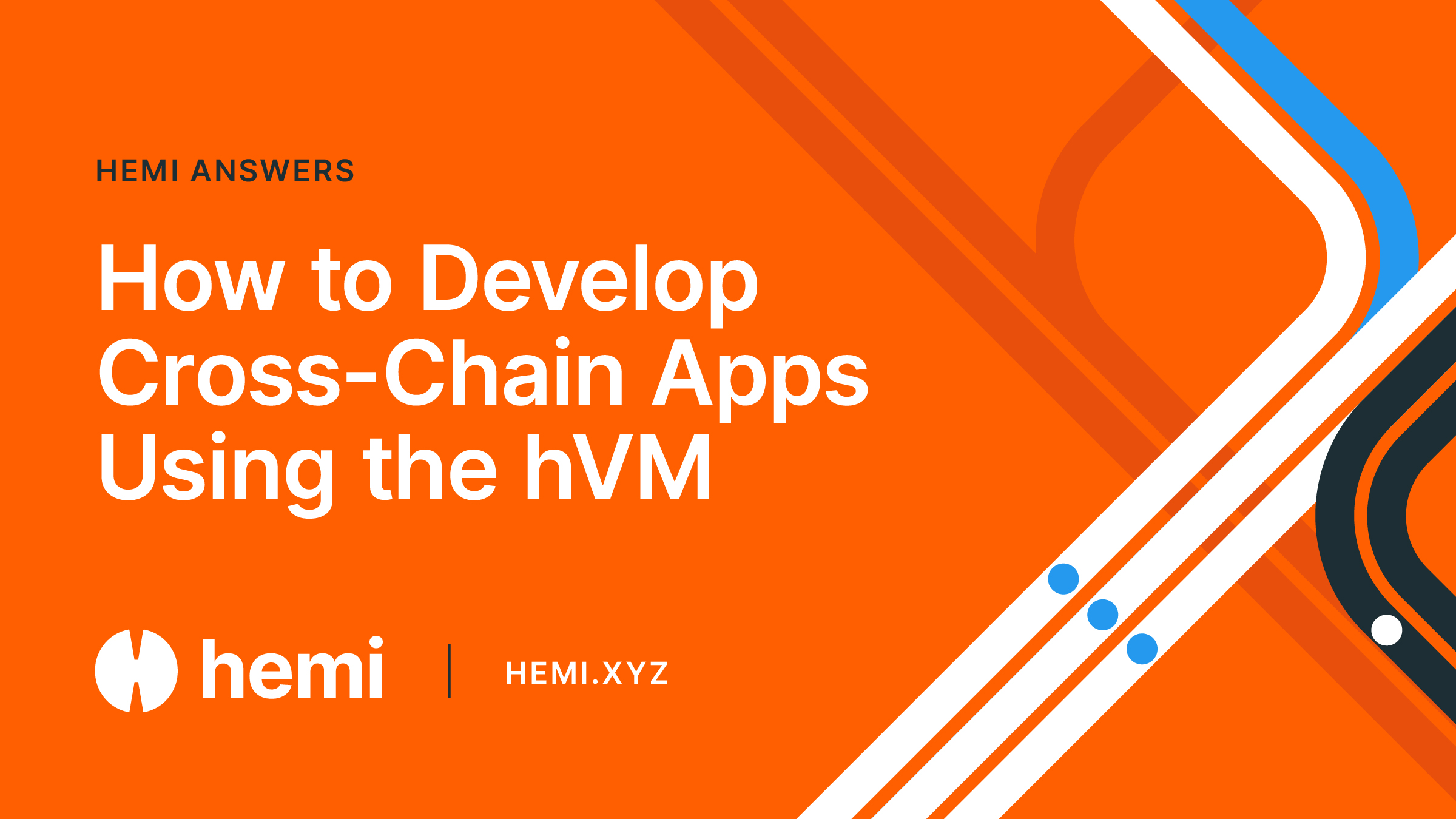- Bitcoin
- Ethereum
- Hemi
- Learn Center
- July 3, 2025
How to Develop Cross-Chain Apps Using the hVM

The Hemi Virtual Machine (hVM) is at the core of Hemi’s approach to secure, scalable, and bridgeless interoperability. For developers building cross-chain applications, the hVM offers a way to deploy logic that interacts with multiple blockchains natively — without relying on risky crypto bridges or wrapped assets.
If you’re looking to tap into liquidity, users, and functionality across ecosystems like Bitcoin and Ethereum, understanding how to develop on the hVM is the first step.
What Makes the hVM Different
Most blockchain development environments are tied to a single base chain. Smart contracts live on Ethereum, Solana programs run on Solana, and so on. Cross-chain interactions typically require external bridge infrastructure, which adds latency, cost, and security risk.
The hVM takes a different approach. It’s designed to execute code across multiple chains using Hemi’s Proof-of-Proof (PoP) consensus and crypto tunnels. This allows your application to send and receive verifiable messages between chains without introducing a centralized intermediary.
The result is true cross-chain execution, where your logic can query state, trigger transactions, and coordinate actions on multiple blockchains as if they were part of a single environment.
Setting Up Your hVM Development Environment
To start building with the hVM, visit our documentation page to begin working with the virtual machine, PoP proofs, and the crypto tunnel APIs. The setup process is similar to other smart contract frameworks, but with additional tooling for multi-chain deployment.
Developers can write hVM programs in a familiar syntax — often Solidity-like for EVM compatibility — but with extensions for cross-chain calls. These extensions let you define logic that runs partially on one chain and finalizes on another, all verified through Hemi’s PoP anchors.
Designing Cross-Chain Logic
When designing your application, think about how data and value flow across ecosystems. With the hVM, you can:
- Pull real-time state from another chain (e.g., a Bitcoin block header) directly into your contract.
- Trigger events on a different chain in response to on-chain logic.
- Coordinate asset movements without wrapping tokens or using a separate bridge validator set.
For example, you could build a lending platform that accepts native Bitcoin as collateral while issuing stablecoins on Ethereum, all through hVM-managed tunnels.
Why Build Cross-Chain Apps on the hVM
By using the hVM, you bypass the weaknesses of traditional crypto bridges while gaining access to multiple liquidity pools and user bases. Security is anchored to the consensus of the chains involved, not a separate bridging layer.
For DeFi, NFTs, gaming, and enterprise use cases, the ability to operate across Bitcoin, Ethereum, and other ecosystems without wrapped tokens is a significant advantage — one that could define the next phase of multi-chain application development.